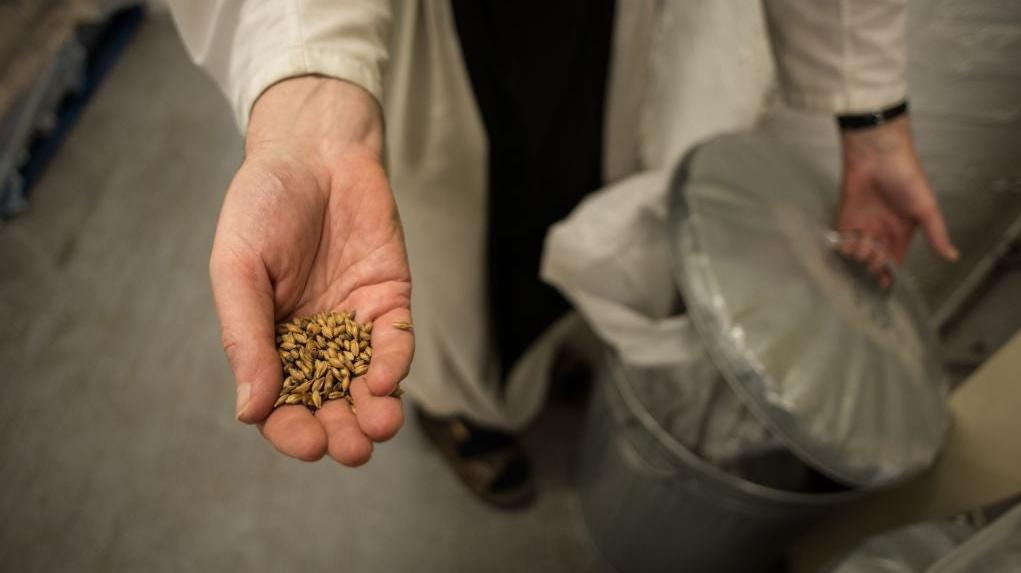All About Malt, The Wonder Grain In Beer And Milkshakes
Single-malt scotch, malted milk balls, beer malt: they're all different sides of the same delicious coin.
A rosy-cheeked young woman sidles up to the soda fountain counter. "Gimme your best malt," she chirps. "Lady, we got all kinds of malts here," barks the soda jerk. "You want a malted milkshake? You want single-malt scotch? You want a brown ale brewed with chocolate malt?" (In this scenario, the soda fountain also serves booze.) The young woman looks around, bewildered. "What's the difference between all those malts?," she cries. The soda jerk sighs and shakes his head. "Only one way to find out," he replies. "Read The Takeout."
Thanks, soda jerk. It's true: malt pops up in all kinds of products. Once processed, malt creates the crunchy center in malted milk balls and lends an unforgettable aroma and body to ales and lagers. But how does one grain do so much?
What is malt?
Malt is, essentially, a dried cereal grain—usually barley, although any grain can be "malted." During the malting process, the grain is soaked in water and allowed to germinate, or sprout. It's dried, or "kilned" shortly after. The resulting product is the malt in question. (Fun fact: malt makers are called "maltsters.")
During the malting process, the grain develops a sugar called maltodextrine. That sugar tastes sweet, which is how you end up with malted milk powder in dessert products. At the same time, the grain develops enzymes that aid in fermentation processes, which is why it's so popular in the beer and whiskey industries. A tasty grain that also speeds up fermentation? Ding-ding-ding.
What is beer malt?
There's really no such thing as "beer malt." Malt is malt, although brewers do work with different kinds of base malts to produce different kinds of beers. Either way, like I mentioned above, malted grain contains enzymes that convert starches into fermentable sugars. That makes malt an incredibly important ingredient in beer.
When it comes time to transform a pile of dried grain into a delicious beer, brewers will add the malt to hot water, known as strike water. The hot water converts the grains' starch into simple sugars. Once those sugars are dissolved in the hot water, the brewer is left with wort, or the unfermented base of a beer.
What is whiskey malt?
Whiskey makers love malt for the same reason brewers love malt: it's a valuable fermenting agent and lends a lovely flavor to boozy products. If you see the words "malt whiskey," you know that the whiskey's base contains at least 51% malted grain. The whiskey process is very similar to the beer process: the grain is crushed and mixed with water to produce a "mash," or whiskey base.
What about malted milk?
If you love the toothsome center of WHOPPERS malted milk balls, you've got malted milk powder to thank. Malted milk contains malt powder, which is essentially... powdered malt. Instead of being crushed and used in a brewing scenario, the dried malt is powdered, resulting in a pale yellow product with a nice nutty flavor.
Plain malt powder is often used in breadmaking (you might see it labeled as diastatic malt powder) to feed the yeast and promote fermentation. But malted milk powder, like the kind in shakes or candy, is malt powder combined with milk solids. The milk solids temper the nutty flavor of the malt powder, creating that sweet flavor you'll see in desserts like WHOPPERS.
